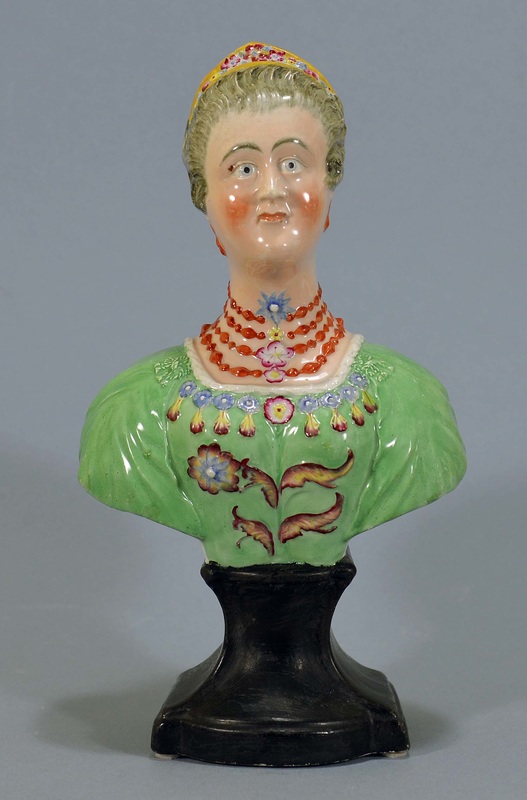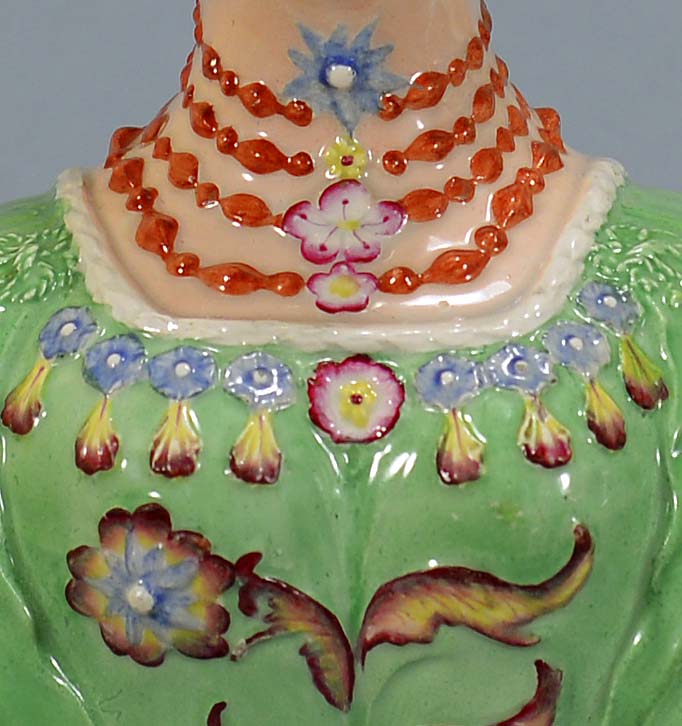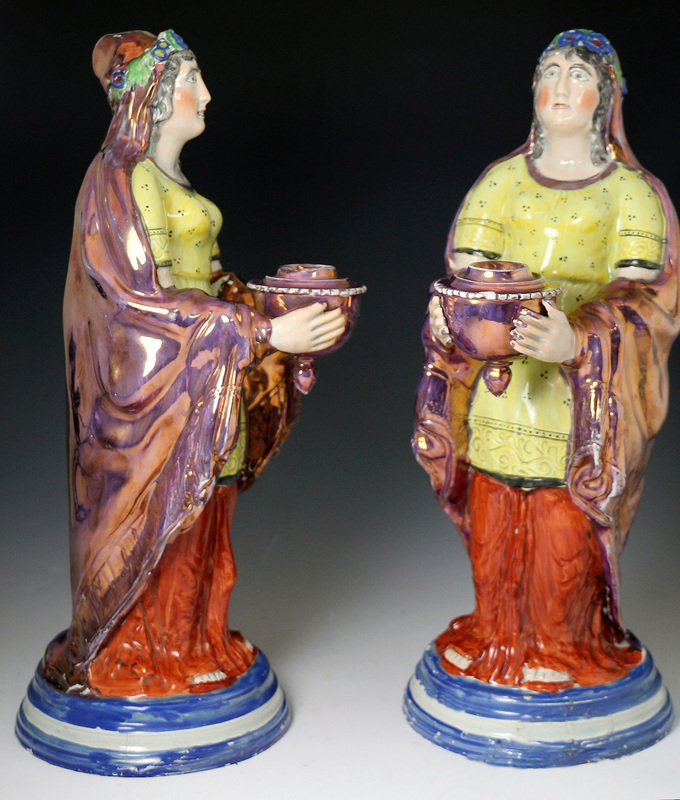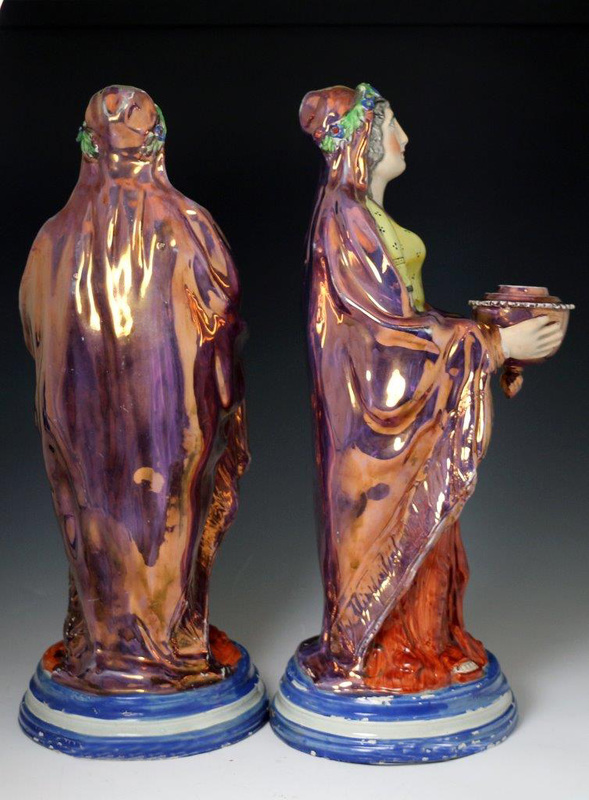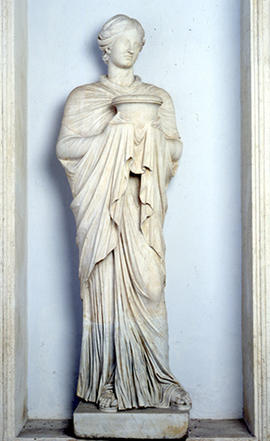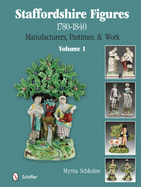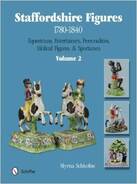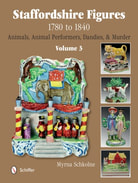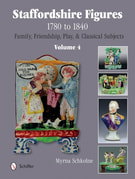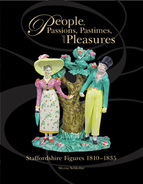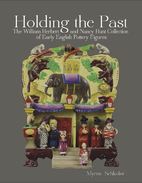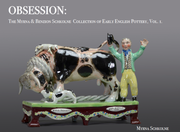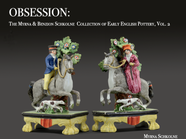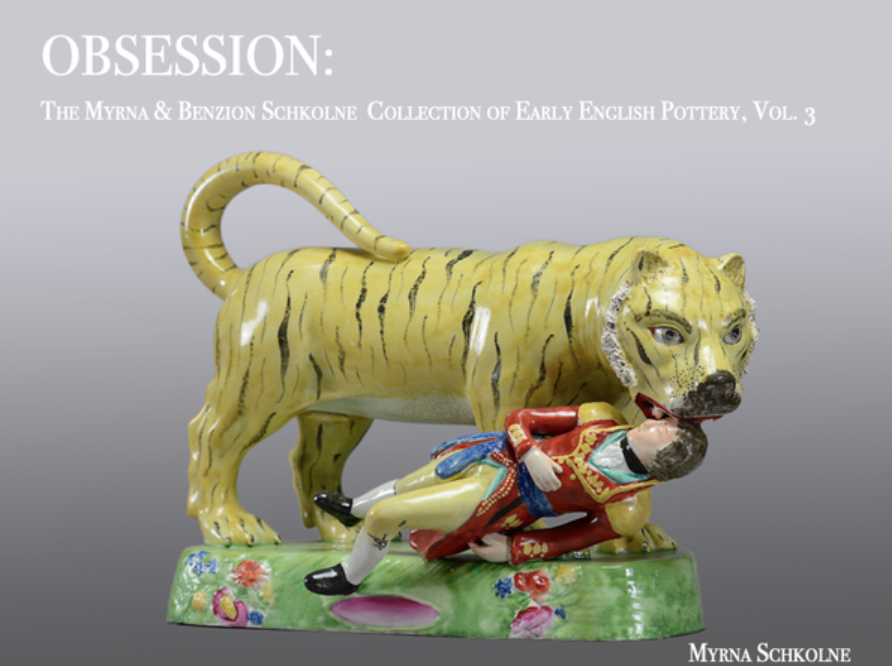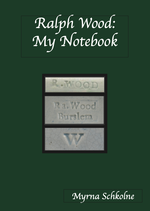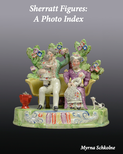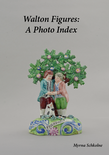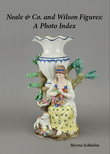It has been some weeks since I first saw this bust, and, pathetic though it is, I am still star-struck. Charlotte sits on the wide window shelf at my kitchen sink, and I can't get enough of her. Her jewels and the detail on her dress are quite magical....unlike anything I have seen on a Staffordshire bust. I think the bust is circa 1800 because the soft green of the dress is an early color--after 1805 greens became harsher.
Queen Charlotte (1744-1818) was an amazing woman who gave birth to 15 children, 13 of whom survived to adulthood. Interestingly, speculation runs rife that she was black, making her Britain's only black monarch. Some argue that Charlotte descended from African ancestors. Yet more historians doubt this theory, pointing out that the nine-generation distance between Charlotte and her supposedly black ancestor (a Portuguese noblewoman said to have descended from an African woman in the thirteenth century) is just too big a stretch.
Sir Allan Ramsay did most of the paintings of Queen Charlotte, and Ramsay's paintings suggest that the queen may have been of African descent. But perhaps Ramsay had an alternate agenda. He was one of the leading anti-slavery intellectuals of his time, and his grand-niece was black (Dido Elizabeth Lindsay, the black niece of Lord Mansfield). None of the contemporary caricatures of the queen suggest she was anything other than lily white, and caricaturists of that day would have had a field day if the queen's appearance suggested of African descent. Add to this, if Charlotte was indeed of black ancestry, why did not one of her too-many children exhibited even a trace of it?
Whatever Charlotte's ethnicity, the Staffordshire bust that adorns my window ledge is quite glorious, and that's how I shall always think of this queen. After all, she was the last queen of America....unless you think either Oprah Winfrey or Hillary Clinton has since earned that title!
